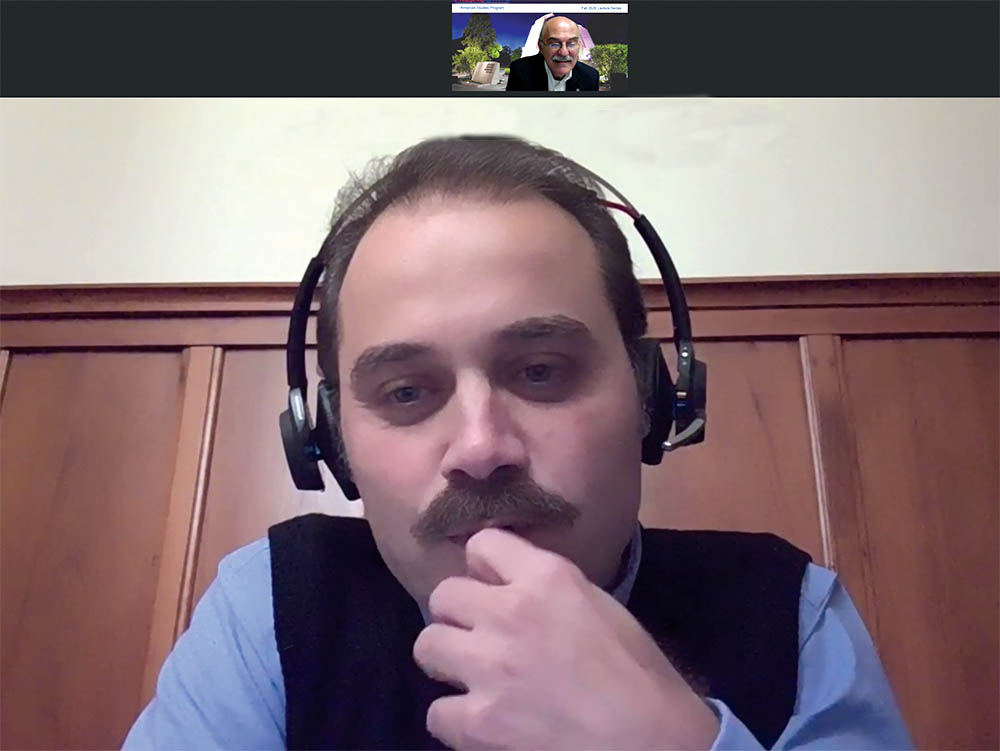
Arshak Abelyan
Staff Writer
The conscription of Christians and other non-Muslims in the Ottoman Empire had been a topic of consistent debate within the 19th and early 20th centuries. Following the restoration of the constitutional regime in July 1908, Armenians were optimistic of this new push for equality in Ottoman society. “One of the important requirements of this political equality was to be conscripted. In other words, extension of military service to all, not only Muslims, was a necessity and indicator of equality,” stated Dr. Ohannes Kılıçdağı.
As the 17th Kazan visiting professor in the Armenian Studies Program during the Fall 2020 semester, Dr. Kılıçdağı presented a lecture on the topic of “‘Living Together Requires Dying Together’: Conscription of Armenians into the Ottoman Army after the 1908 Revolution.” When describing his motives in studying this topic, Dr. Kılıçdağı stated, “My Ph.D. dissertation was about this second revolutionary period of the Ottoman Empire and to understand that period and the Armenians, I examined dozens of journals, and this issue frequently and continuously showed up in newspapers and in debates.” He added that military service was something he had to focus on to fully understand the failures that took place amid transformation, that is from a hierarchical society to an egalitarian society in the Ottoman Empire.
Dr. Kılıçdağı argues that prior to 1908-1909, Ottoman bureaucracy was divided into camps: one of which supported the conscription of Christians and other non-Muslims. On the other hand, opposition to conscription had dominated Ottoman politics in the period of the 19th century. It was evident that much would not change under the conservative camp until the early 20th century. In 1856, the traditional Islamic tax that was collected from non-Muslim subjects, called the jizya, was abolished. Dr. Kılıçdağı argued that the Jizya tax had not truly been abolished, rather it was transformed into a military exemption tax that Armenians and other non-Muslims were still liable for. “This military exemption tax had been paid not only by those at the age of active duty, but by all males until up to seventy years old,” said Dr. Kılıçdağı.
Dr. Kılıçdağı’s research focuses more on the details of Armenian attitudes toward conscription. He stated that the Armenian people and their political leaders had “emerged as the staunchest and strongest supporters” of the extension of military service to Christians. He presented two factors that supported these attitudes. The first had to do with ideological reasons and the second had to do with economic reasons. As an example of an ideological reason for their support for conscription, Armenians “contended that their exclusion from military service would mean the persistence of their secondary status or second-class citizenship,” said Dr. Kılıçdağı. As for economic reasons, the military service exemption tax had simply become a burden for the Armenian people.
The Armenian people dis-played this displeasure by sending telegrams to their religious and political leaders. Thousands gathered in cities such as Kharpert and Sivas where they demanded their own conscription through demonstrations. Such news had even reached into the halls of the Ottoman parliament where opposition to the idea of Armenian conscription had diminished. A strong voice came from parliament deputy, Krikor Zohrab, who empathized with the Armenian population and stated that, “Learning to live together requires dying together.”
On July 12, 1909, the Ottoman parliament decided to abrogate the military exemption tax, allowing Armenians to be conscripted. According to one of the sources that Dr. Kılıçdağı quoted in his lecture, “We are no longer reaya, we are not any more gavours, or [only] tax-payer either. We are also children of this land, it is also our fatherland, since we are ready to sacrifice our blood to the last drop for the goodness of the country.” While many Armenians celebrated, there were still a group of Armenians who had some fears and apprehensions of these newly founded changes, according to Dr. Kılıçdağı. Such examples are, and not limited to: unpredictable treatment of non-Muslims like themselves by their commanders and peers, the long years spent away from family and home life, and the possibility of being forced to convert to Islam.
“I think one of the obvious conclusions of this account is that Armenian political leadership, both civil and cleric political leadership, made their political investment in the Ottoman state after 1908,” says Dr. Kılıçdağı. With strong support for conscription, Armenians had unintentionally placed their own families, communities, and future in the hands of those, who would later lay the framework for the mass annihilation of their own compatriots.
 Hye Sharzhoom Armenian Action
Hye Sharzhoom Armenian Action